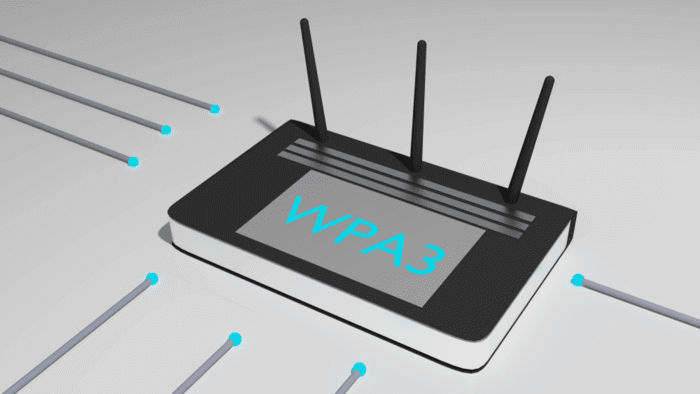What Can Someone Do With Your IP Address?
“My what?”
An IP address – that ultra-boring, long number issued by your Internet Service Provider (ISP)?
Yes, that one.
Paying so little attention to it can become a HUGE source of grief since an IP address is a very valuable digital asset that a threat actor could use for malicious purposes. So, what’s the potential harm if your IP falls into the wrong hands?
Let’s dive in…

Information Attackers Can Extract from AN IP Address
When you ask, “What damage can a stolen IP address do?” you are really asking two questions:
Your IP address alone won’t give malicious actors immediate access to your accounts or devices, but it does give them an opportunity and information to attack.
1. Information that Hackers Extract with Stolen IP Addresses
Stolen IP address data is the beginning of identity theft. Cyberattackers can use basic data to learn more about your personal information, such as:
2. Digging Deeper Into Your Data
Stolen IP address information won’t make detailed account information appear automatically. However, attackers can use that basic information to set up more sophisticated, multi-step attacks such as phishing, bank fraud, and DDoS malware attacks. You might be surprised to learn the types of personal information you can also lose control of information such as:
It takes little imagination to see how this information, once released to bad actors, can be used for fraud — usually without the user knowing what happened.
How Cyberattackers Use Stolen IP Address Information?
There are many types of private personal information (PPI) that cybercriminals can alter or steal via IP addresses.
Bad actors with a taste for crime or malice can use PPI to turn a profit, get someone to give in to a ransom, or put someone’s failings up for the world to see.
Here’s a table that presents these different aspects of IP address-related malice and crime.
Committing Identity Theft – Threat actors use various types of personal information or commit identity theft. This umbrella term covers a lot of territory. It can mean any one or more of the following crimes or activities.
TARGET | HOW CRIMINALS USE IT | HARM OF EXPOSURE |
Consumer or personal identifiable information (PII) | Sell PII on the black market. There are many online locations, where PII can be bought and sold. To many, the most notorious online location is the Dark Web. | Often, targets know nothing about these sales until evidence of identity theft (in the form of criminal charges) surfaces. |
Sell PII to marketers. Sales can be individual items or data bundled into thousands of consumers and sold in bulk. | Consumers are pummeled with a tsunami of unwanted content sold by third parties. | |
Data taken via company breaches or phishing expeditions | Post embarrassing information online. Sometimes cyberattackers will simply post potentially embarassing information online for anyone to see. | The result: Possible damage to your personal and business reputations. Your personal information would be available, and identity thieves could use your data for their crimes. |
Hold information for ransom. Attackers encrypt your data and then demand a ransom for the encryption key. | Victims must choose between paying a ransom or risking the many types of personal, financial, and other business costs of losing access to data. | |
Computer or device | Information about device vulnerabilities. Your co-opted IP address becomes a known weak spot in computer defenses. Attackers use it to identify apps and software you’re running and tailor attacks to known security issues of these assets. | Attackers can use any known vulnerability to plant malware onto your device and control it. |
Control Internet-connected home devices. Cyberattackers use your IP address to discover the type of your home Wi-Fi router. This infects web-connected devices (your smart TV or baby monitor). | Experiencing slower internet speeds and higher energy bills? – Your home network has been recruited to work in a cryptomining operation! | |
Data taken via company breaches or phishing expeditions | Apply for bogus credit cards or loans. With your stolen money in hand, it’s easy to set up and verify new accounts under criminal control. | Damage to user’s credit ratings and possibly, charges of account fraud. |
Take over online account info. Attackers with your login credentials can get into and control online accounts. | When attackers get access, they change the settings, and sorry, you’re locked out! Criminals can also use account data to send phishing emails to your contacts. | |
Intercept your IRS refund money. Route your refund money to their own address. | Leave you owing money to the IRS and perhaps facing criminal charges, too. |
As you can see, there are many types of identity information to steal and many ways to use it, often to the information owner’s harm.
But what about protection from IP address theft? The good news is there are plenty of ways to take advantage of modern knowledge and best practices to tip the balance of IP address theft risk in your favor.
1. Protecting Home Networks from Identity Theft
All cyberattacks against IP addresses have one thing in common – they shine a harsh light on how we all manage our network assets.
We’re told that preventing identity theft is the best way to protect our home networks from the misuse of stolen PII, including IP addresses. Although prevention stretches the truth a bit (it’s an absolute, which can’t be accomplished), there are tools and best practices that can protect home networks to a remarkable degree. This section highlights the best practices that make this risk reduction possible and reliable.
2. Setting Up an Impregnable Router Environment
Keeping a safe IT environment for students and family members engaged in school, family chores, and fun has always been important. Now, remote work often expands that environment to professional commitments and data management.

Here are some highlights from a useful blog post filled with good ideas on how to keep our home network safe:
1. Change default router login credentials. Account credentials are the “Open, sesame!” to our IT assets, and cyber crooks know it. So, it pays to create a routine in the form of spring cleaning checklists of IT chores.
If you’re lucky, your apps already provide automatic updates. If auto-updating is OK with you, consider signing up for these update services. For other security-related tasks, as the folks at Nike say, “Just do it!” Transforming IT chores into routines can make the work easier.
2. Place your router in a central location in your home. If you live in a studio apartment or other restricted area, this might be a bit of wishful thinking, especially if you’re sensitive to your décor. But keeping your router away from other sources of magnetic fields should provide the connectivity you need without the router becoming too visible.
3. Upgrade all routers to WPA3. This is the most recent router security protocol. Whether purchased or rented, all routers should have this label. If it does not, ask for a new one or negotiate a better deal.
4. Create a strong Wi-Fi password and change it often. “Good network hygiene.” By now, it’s enough to make anyone’s teeth grind to dust. But it’s true that like carefully positioned routers with new address numbers, carefully managed passwords are a pillar of safe computing. By now, you know the rules:
5. Use a virtual private network (VPN). Good network security is always an intelligent choice, especially in our homes. Hiding data is the objective of this exercise, so let’s do it. VPNs hide your Wi-Fi activity, IP address, and browsing data. The goal is an extra layer of security, just what we are looking for.
And, as we’re often told, when it comes to buying or renting VPNs, we get what we pay for. Experience tells security experts that several dollars a month in extra rent is worth it.
Getting an Extra Layer of Protection
Some readers might read this litany of to-dos with dismay. “Wait just a minute, people have lives! Where are the time and effort needed to find and maintain this ‘extra layer of protection?’ Where I live, extra time is hard to find.”
Well, either you bite the bullet and make time to ensure your IP address and other PII are protected, OR you get peace of mind by buying identity theft protection.
A service such as Aura can help monitor your credit, home, and auto title, alert you to malicious activity in your accounts, and so much more!
Sure, an IP address may seem insignificant and highly unlikely to be used by a cybercriminal, but why take the chance? The threat is out there, or already in your devices. Unfortunately, for many of us, getting hacked is only a matter of time.


